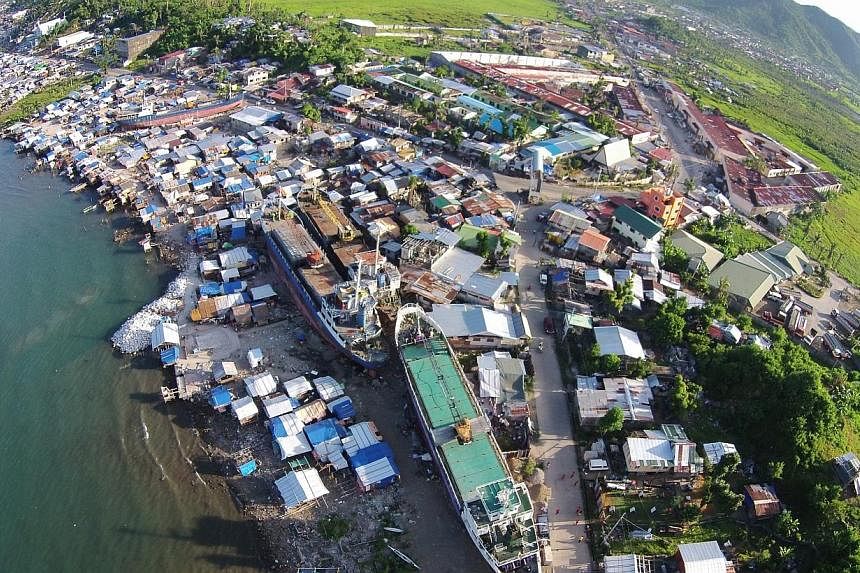MANILA (REUTERS) - The Philippines will spend 170 billion pesos (S$4.8 billion) to rehouse some 200,000 families displaced by last year's super typhoon Haiyan that killed 6,100 people, the government said in a masterplan released on Friday.
It has taken a startling nine months to hammer out the plan because crippling bureaucracy entailed lengthy vetting, say government consultants, and sparse technical data on geological hazards and land use plans held up relocation decisions.
Thousands of displaced families remain in makeshift tents or substandard temporary shelter areas, but all-out reconstruction will begin soon after President Benigno Aquino approves the plan, although it is not clear when this will happen.
"We are confident the rehabilitation efforts will now shift to high gear," said Panfilo Lacson, presidential assistant for rehabilitation and recovery. "We are hoping to achieve at least 80 percent completion of these priority projects before the end of the president's term,"he added. Mr Aquino's term runs until June 2016.
About a million homeowners will also receive shelter assistance under the plan for houses that were either destroyed or partially damaged, said Mr Lacson, a former senator.
The effort will also help build sturdier government facilities, such as schools and evacuation centres, besides providing livelihood and training assistance for farmers, fishermen and those who raise livestock.
Mr Lacson said the budget department had made available about 137 billion pesos this year, with the rest to be released in next year's budget, and promised transparency in project funding.
The slow pace of government reconstruction work has attracted criticism. "It's alarming that as the typhoon season starts, we still see tents in Tacloban," said Prospero de Vera, a professor of public administration at the University of the Philippines.
Tacloban, the main city on the Philippines' central island of Leyte, was a wasteland after Haiyan destroyed about 80 per cent of houses made of light materials, and is slowly returning to life. "The normalcy in the lives of the people has not returned until now in Tacloban, and that is the biggest disaster of all," added Mr De Vera.
By July, Manila had released more than 35 billion pesos in aid after Haiyan, the budget department has said, spent on food and temporary shelter areas for displaced families, as well as to rebuild some public buildings.
But that amount is just a drop in the bucket, with state funds and loans from lenders such as the World Bank and the Asian Development Bank and bilateral sources committed to typhoon rehabilitation reaching at least US$4 billion (S$ 4.9billion).
Haiyan, one of the strongest typhoons to ever hit land, tore through the central Philippines last November, reducing most of what was in its path to rubble in tsunami-like surges and driving nearly 4 million people from their homes.
The pace of government reconstruction slowed after Mr Aquino last year abolished congressional allocations, called "pork barrel" funds, because bureaucrats were too careful in signing contracts.
Last month, the Supreme Court declared illegal the president's stimulus fund, prompting impeachment cases to be filed against Mr Aquino in the wake of the decision.

